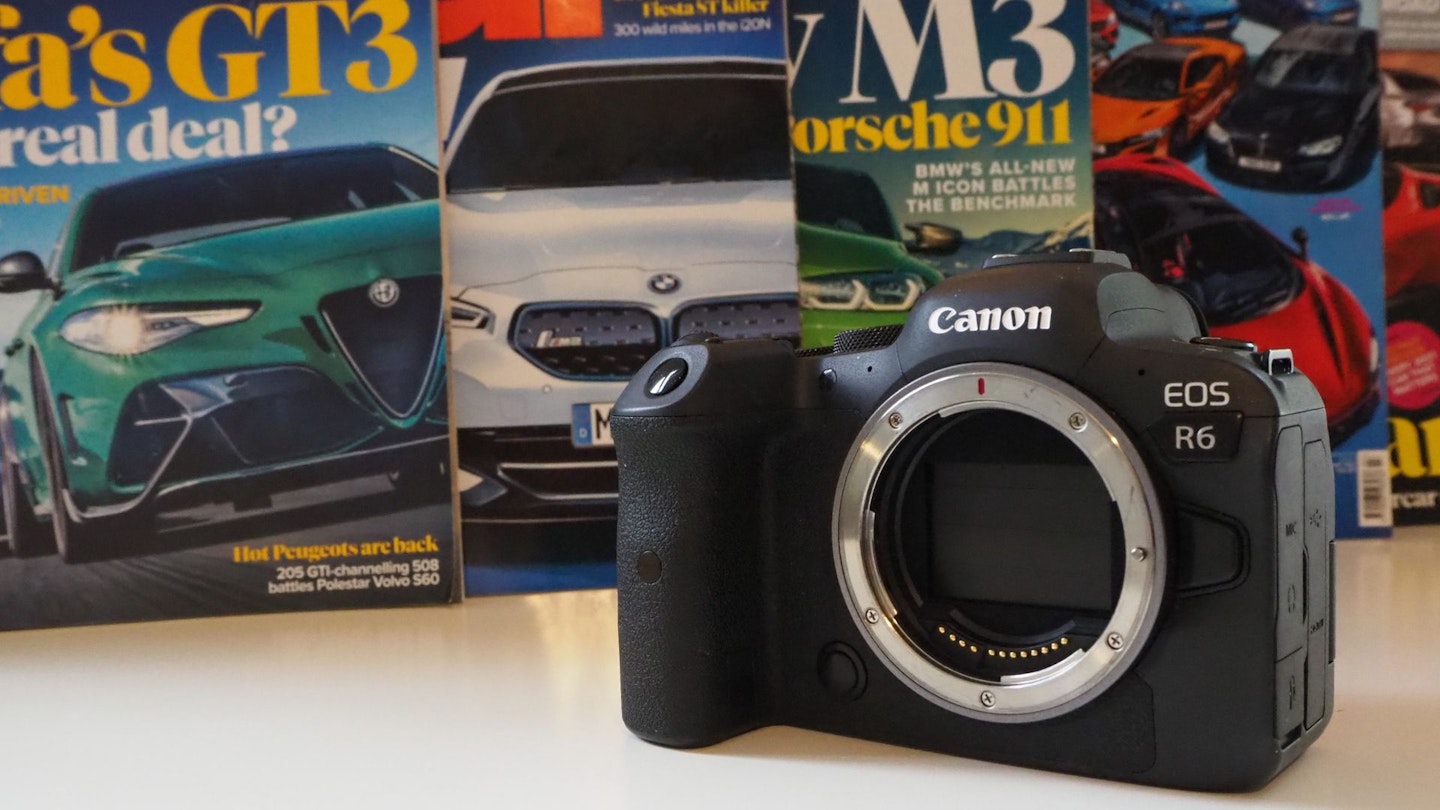Twenty first century electronics are arguably more like consumables than investments. The rate at which successive models are released is insane and whatever you buy it’ll be outdated and worth nothing the moment you take delivery.
There are exceptions, when demand for new gear outstrips supply for instance (PlayStation 5 is a classic case in point). Another is cameras. Cameras are expensive but are so for a reason. Their components are extremely precise and expensive to make, but the result is that they do not depreciate like a gaming monitor. Good cameras take great pictures for as long as they work, and those who use them know that.
Therefore, a camera is a proper long-term investment: a beginner buys their first camera to learn with; after a while they want to sell their first camera and upgrade. It’ll fetch a reasonable price second hand if it’s been looked after, and the learner-turned-hobbyist can then invest in a better model.
That’s the general ecosystem of the camera market but of course things feel more complex when it comes to specific brands and models because, my word, there are many out there to choose from. Where to start?
In this article we are looking at the biggest camera heavyweight: Canon.
Tell me about Canon
Canon has a long history etcetera etcetera, but let’s focus on the now. Like its closest competitor Nikon, Canon caters to hobbyists and professionals, producing APS-C and full-frame DSLR and mirrorless cameras (see below for the camera glossary of terms). Traditionally, Canon’s product range has been more DSLR-focused and it still is, although this is changing quite quickly with the new generation of mirrorless cameras coming along.
Camera glossary
DSLR camera: The acronym stands for digital single lens reflex and is still top dog for image quality. That’s why most professionals still use DSLR cameras, but there are still plenty of entry-level DSLR cameras around too. DSLR cameras are very customizable, which is great but does take some learning to make the most from.
Mirrorless camera: DSLR cameras use a reflex mirror, but mirrorless ones do not. Instead, light passes directly through from the lens to an electronic sensor. It’s more compact and allows you to preview selected settings before taking the shot. Advances in recent mirrorless models means some can challenge DSLR cameras in terms of image quality.
Sensor size: Full-frame, APS-C, and micro four-thirds. There is a lot that differs between the three sizes, but one of the major points is that full-frame sensors perform better in low light because they are physically larger and can capture more light.
The best canon cameras for car photography
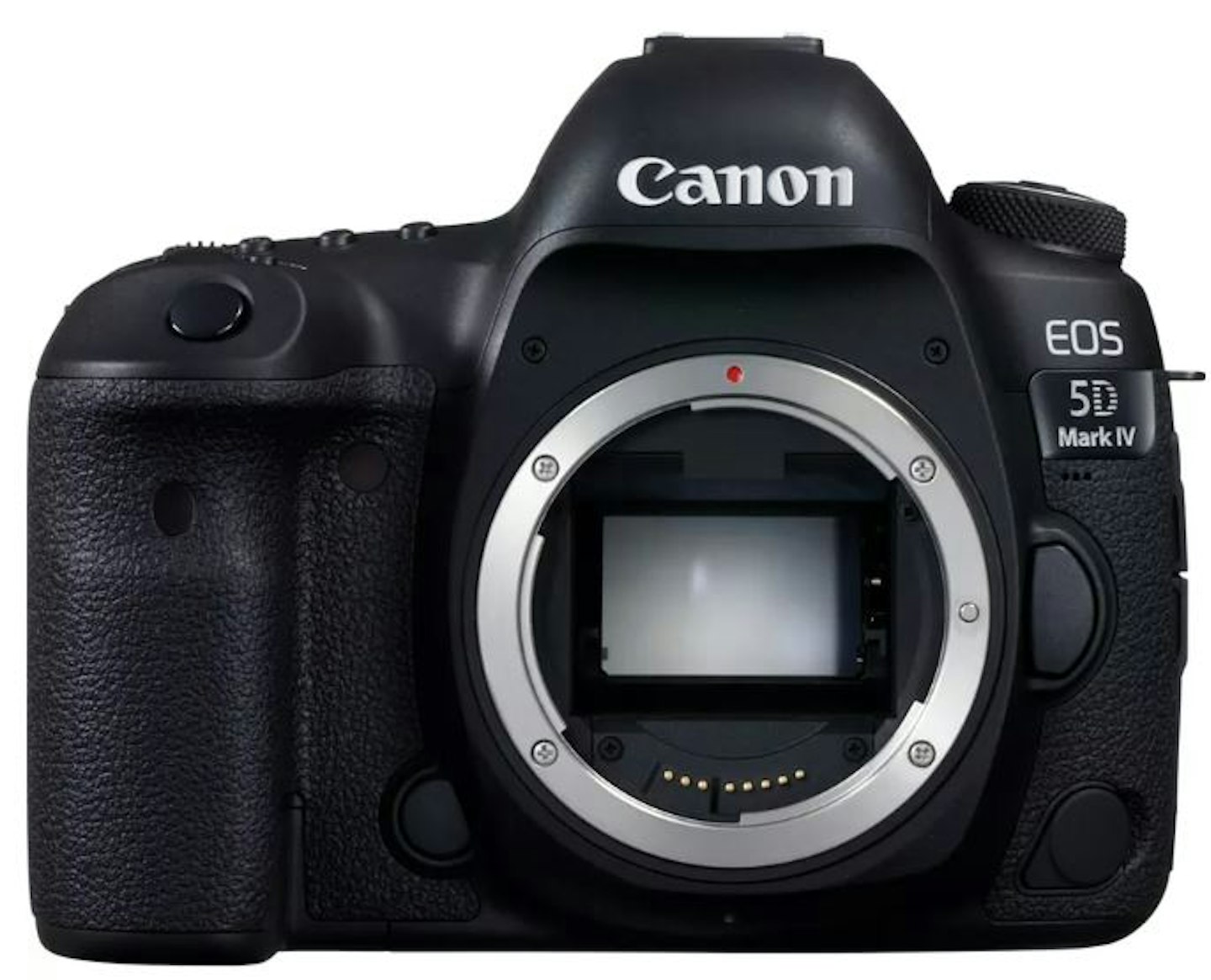
Type: DSLR
Sensor size: Full frame
Once you’ve honed your abilities, you can look to develop your style and skill with a clever DSLR such as the EOS 5D Mark IV. This camera is all about image detail. It even features a Fine Detail option that allows you to adjust sharpness and contrast settings.
Pursuing detail, the EOS 5D Mark IV has a 61-point autofocus system that is fast to pick up subjects, even in low light and when tracking. You can also manually select the focus point using the selection button on the camera body.
In addition to incredible image quality, the EOS 5D Mark IV also has weatherproofing and can capture video in 4K and Full HD. It therefore offers a surprising amount of versatility.
| Pros | Cons |
|---|---|
| • Top image quality | • Fierce competition from mirrorless these days |
| • Fantastic autofocus | |
| • Weatherproofing |
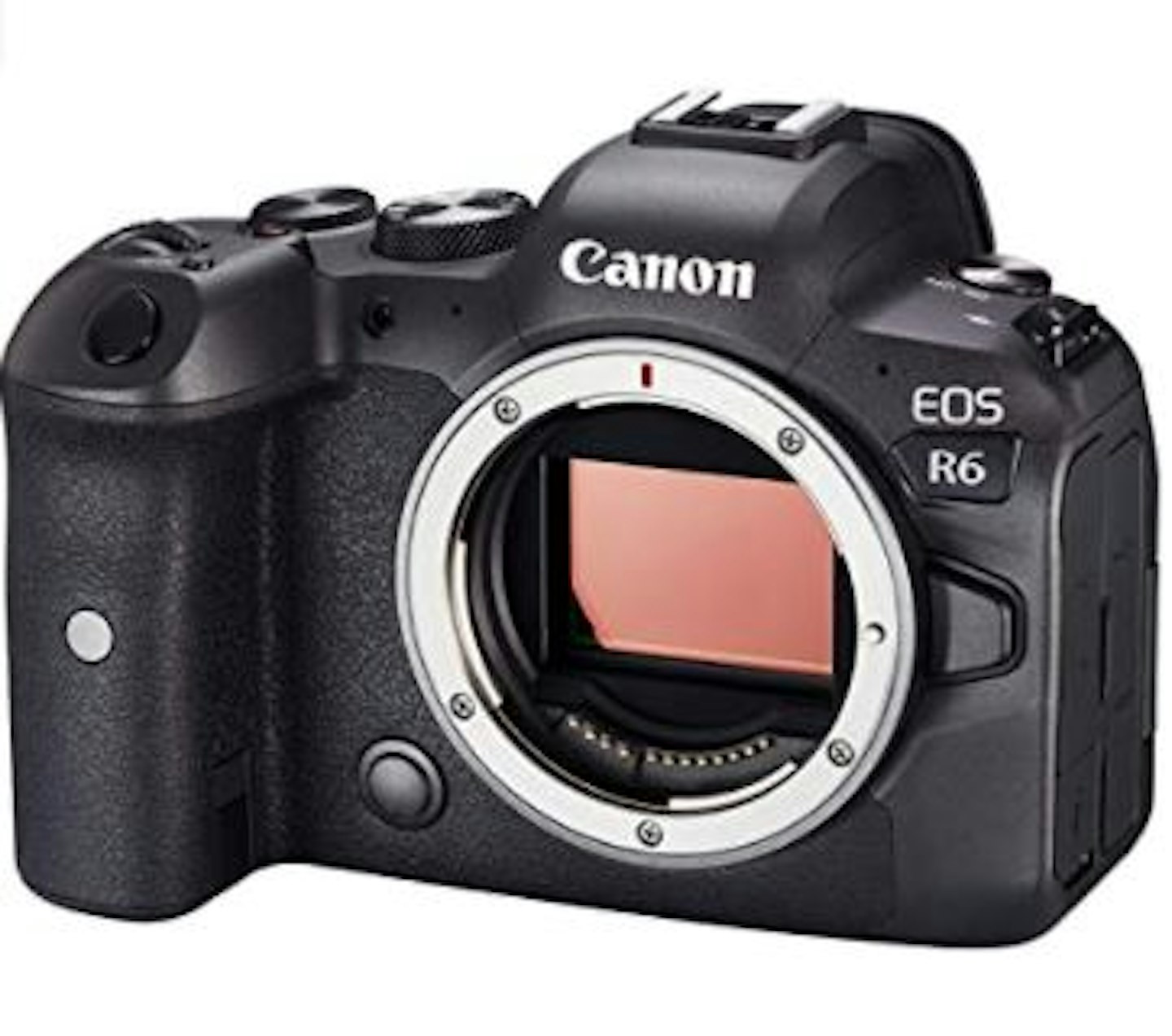
www.jessops.com
Type: Mirrorless
Sensor size: Full frame
The EOS R6 is a highly aspirational camera for those looking to move on up with their photography. It’s about as versatile as you’d want a camera to be and remarkably capable. It features Canon’s amazing Dual Pixel CMOS AF II autofocus, which tracks eyes, faces, vehicles, and animals immediately and accurately.
Possessing a 20fps electronic/12fps mechanical shutter speed means you can capture fast-moving subjects. The camera’s full-frame sensor, eight-stop image stabilization, and impressive ISO range collectively help capture and produce fantastic low-light images with ease. Photographers can also turn to videography thanks to 4K video at up to 60fps (and FHD at up to 120fps).
We found the EOS R6 ergonomic and reasonably intuitive, though some of the technical settings are a bit fiddly to set up. It’s also a surprisingly light camera – one of the benefits of mirrorless.
| Pros | Cons |
|---|---|
| • Lightweight and ergonomic | • Some fiddly settings |
| • Incredible autofocus | |
| • 4K/60fps video | |
| • Fast burst rate |

store.canon.co.uk
Type: DSLR
Sensor size: APS-C
If you’ve played around with photography before and are reasonably comfortable with what you’re doing but still have things to learn, you might want to consider Canon’s EOS 90D.
Having an APS-C sensor, the EOS 90D is physically smaller than the EOS 5D Mark IV but no less impressive. Its image detail might not be as incredible (though it’s still fantastic), but it still features an excellent autofocus and fast shooting speed of 10fps.
Having a smaller, lighter camera makes for easier handling too, made even better by the deep hand grip.
| Pros | Cons |
|---|---|
| • Lightweight for a DSLR | • Canon EOS R10 is even better value |
| • Good value | |
| • Great for developing skills |
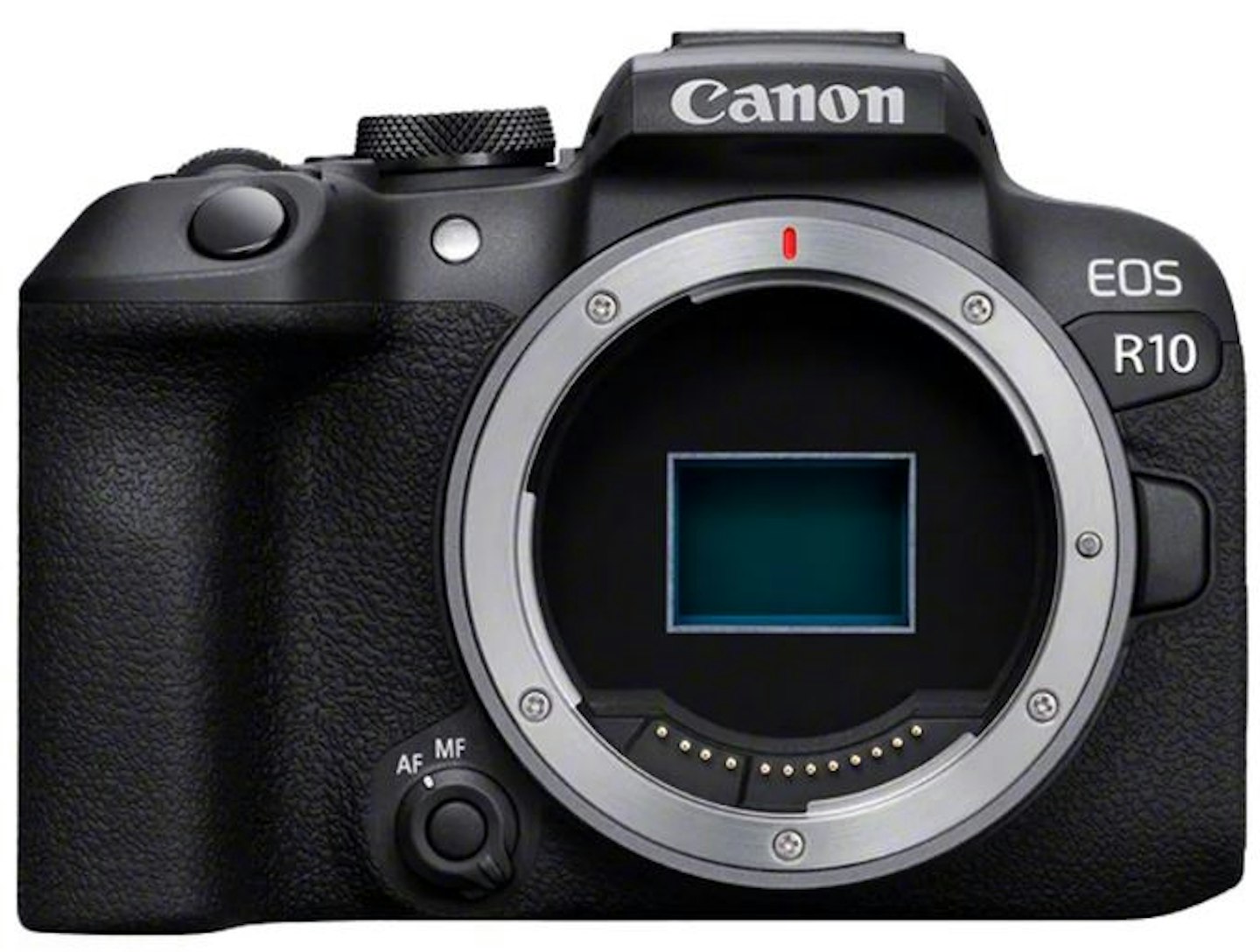
store.canon.co.uk
Type: Mirrorless
Sensor size: APS-C
There is little to fault the EOS R10 on. It’s simply a very good camera for hobbyists. For those wanting to capture fast-moving people, animals, or vehicles, the EOS R10 happily will. For those wanting to indulge in videography, the EOS R10 can record in 4K at 60fps and FHD at 120fps. Meanwhile, the 24.2 megapixel sensor captures everything in very high detail.
All this is wrapped within a body that weighs just 429 grams. Operating the camera is quite intuitive too, largely thanks to the vari-angle touchscreen.
Where models like the EOS 5D Mark IV and EOS 90D are quite image-focused, the EOS R10, like the EOS R6, is incredibly versatile.
| Pros | Cons |
|---|---|
| • Lightweight | • EOS 90D takes higher quality images |
| • Versatile | |
| • 4K/60fps and FHD/120fps video | |
| • Fast burst rate speed |
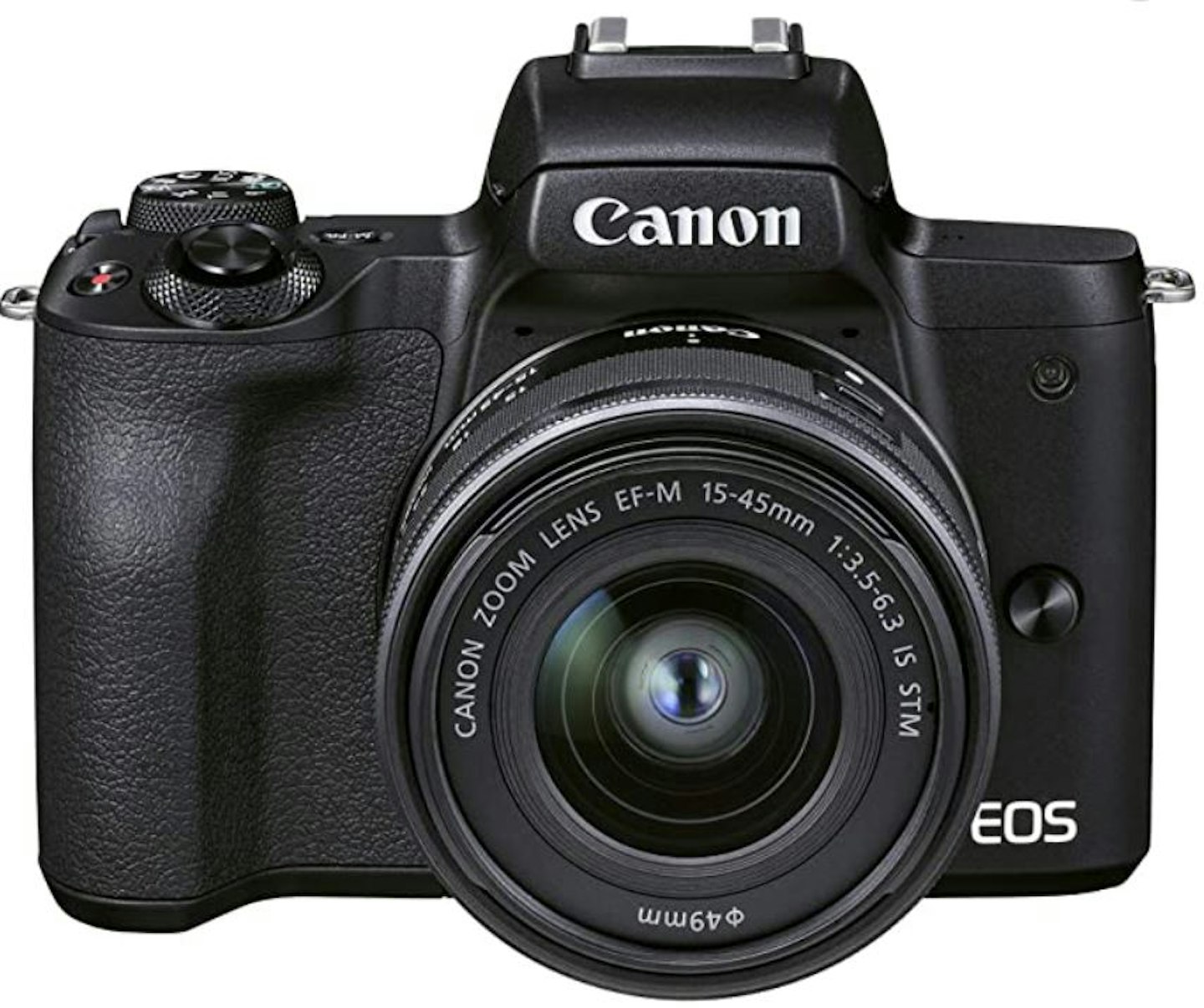
Type: Mirrorless
Sensor size: APS-C
For beginners, the EOS M50 MkII is a safe place to cut your teeth and experiment without making a heavy financial investment. Like the EOS R10, the little EOS M50 MkII is very versatile. It’s designed to be as adept at creating social media content as it is taking photos.
The EOS M50 MkII captures a lot of detail via its 24.1 megapixel sensor and has a lot of convenient, beginner-friendly features and modes. These allow greenhorns to capture excellent photos while learning techniques.
This entry-level camera is very light (387 grams) and compact but still has a mid-sized APS-C sensor. On test, we thought the camera felt a little bit tinny but it performed very well.
| Pros | Cons |
|---|---|
| • Very light and compact | • Easy to outgrow |
| • Great value | |
| • Suitable for beginners |
Lenses
In addition to Canon’s large range of cameras is Canon’s large range of lenses for each type of its cameras. But what’s even better is that adaptors open the door to more lenses and ensures you can keep using your DSLR lenses if you buy a new mirrorless camera, for example. Don’t forget about the second hand market too, if you’re after a new lens.
RF and RF-S: For Canon’s mirrorless EOS R cameras. However, you can also use an EOS R adaptor, which allows you to use the EF and EF-S lenses they may already have from their Canon DSLR camera.
EF and EF-S: Canon’s lens range for its EOS DSLR cameras.
EF-M: Canon’s lens range for its EOS M range. However, you can still use your existing EF and EF-S lenses with the EOS M cameras with the help of the Canon Mount Adaptor EF-EOS M.
Conclusion
Like anything, cameras can be made complicated and certainly seem so to the uninitiated. But don’t be put off. Dive in and give it a crack. You’ll find that there is so much more you can do with a dedicated camera (even an entry-level one) over a smartphone, and the image quality so much better.
Regarding the Canon cameras we’ve looked at, the EOS M50 MkII is a great place to start thanks to its balance of usability and value with ability. The EOS R6 and EOS 5D Mark IV are stunning cameras that experienced photographers should aspire to. Meanwhile the EOS 90D and EOS R10 serve as excellent stepping stones en route to them, or as fantastic options for keen hobbyists.
Although at different levels, all these models are excellent for car photography thanks to useful features such as sharp, accurate autofocus, and quick shooting speeds.
